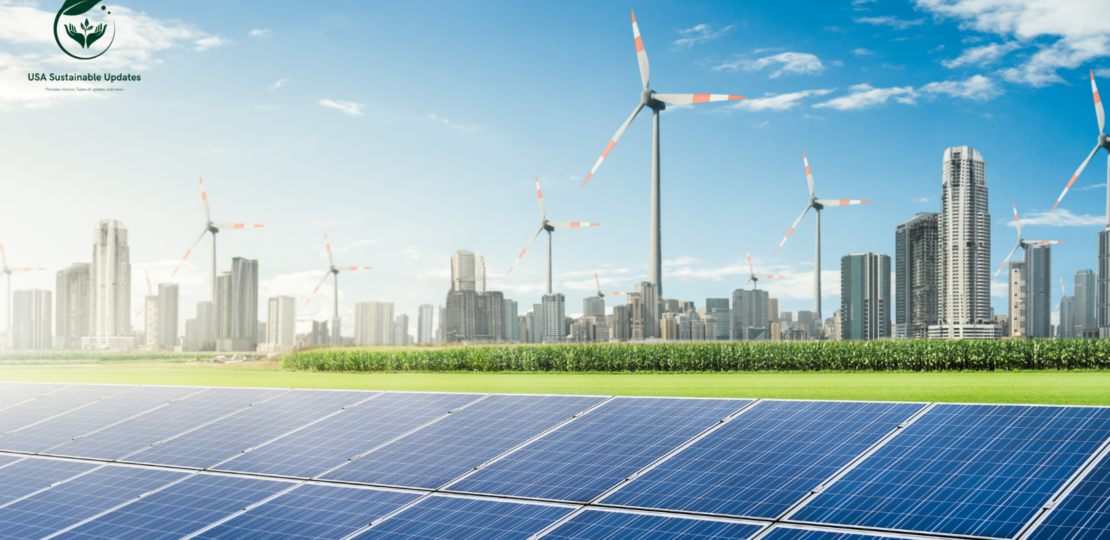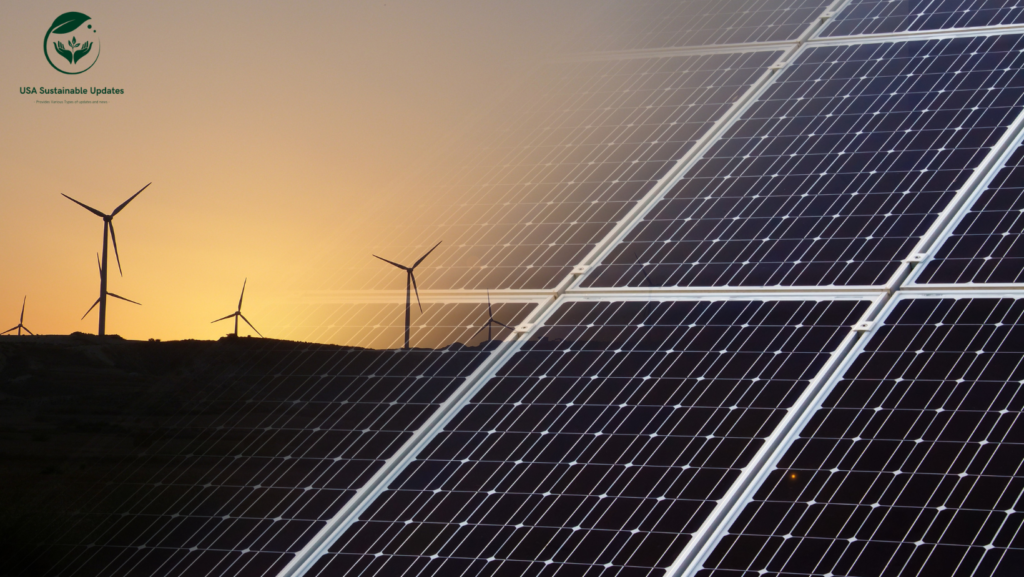
In today’s world, the quest for sustainable and eco-friendly energy sources has become more pressing than ever. Renewable energy, often hailed as the solution to our energy and environmental challenges, holds the key to reducing our carbon footprint and securing a cleaner future for generations to come. This article delves into the significance, types, benefits, and challenges of renewable energy, shedding light on its potential to reshape the global energy landscape.
Table of Contents
- Introduction: Embracing the Power of Renewables
- Understanding Renewable Energy
- The Solar Solution: Solar Energy
- Unleashing the Wind: Wind Energy
- The Flowing Force: Hydropower
- Environmental Benefits of Renewables
- Reducing Carbon Footprint
- Preserving Ecosystems and Biodiversity
- Mitigating Air and Water Pollution
- Economic Advantages and Job Creation
- Driving Innovation and Technological Growth
- Empowering Local Communities
- Overcoming Challenges in Renewable Implementation
- Intermittency and Energy Storage
- Infrastructural Development
- Public Awareness and Policy Support
- Diverse Applications of Renewable Energy
- Powering Residential Homes
- Fuelling Transportation
- Nurturing Agricultural Practices
- The Role of Government Policies and International Cooperation
- Setting Renewable Energy Targets
- Incentives for Adoption
- Collaborative Global Initiatives
- The Future Landscape of Energy: Transitioning to Renewables
- Conclusion: Embracing a Greener Tomorrow
Introduction: Embracing the Power of Renewables
In an era where the consequences of conventional energy sources are becoming starkly evident, the pursuit of renewable energy has gained unprecedented momentum. The shift towards harnessing energy from natural sources like sunlight, wind, and water is redefining our energy landscape. This article delves into the myriad facets of renewable energy and its transformative potential.
Understanding Renewable Energy

The Solar Solution: Solar Energy
At the forefront of the renewable energy revolution is solar power. The utilization of photovoltaic cells to convert sunlight into electricity has revolutionized the way we tap into the universe’s most abundant energy source. Solar panels adorn rooftops and vast solar farms, capturing sunlight and converting it into clean, usable energy.
Unleashing the Wind: Wind Energy
Another powerful contender in the realm of renewables is wind energy. By harnessing the kinetic energy of moving air masses, wind turbines generate electricity. Wind farms, both onshore and offshore, stand tall as testaments to human innovation, turning breezes into a consistent and eco-friendly power source.
The Flowing Force: Hydropower
Water, a symbol of life, also offers a significant source of renewable energy through hydropower. Dams and turbines channel the force of flowing water to generate electricity. This method not only provides a consistent energy stream but also contributes to water management and flood control.
Environmental Benefits of Renewables

Reducing Carbon Footprint
One of the most compelling advantages of renewable energy is its capacity to significantly reduce carbon emissions. Unlike fossil fuels, which release greenhouse gases upon combustion, renewables produce little to no emissions during operation.
Preserving Ecosystems and Biodiversity
Renewable energy systems have a lesser impact on ecosystems compared to conventional power plants. They help safeguard biodiversity and prevent habitat destruction, preserving delicate ecosystems for generations to come.
Mitigating Air and Water Pollution
The use of renewables leads to a cleaner environment by curbing air and water pollution. Unlike coal and natural gas, which release harmful pollutants, renewable sources offer a sustainable way to power our world without compromising air and water quality.
Economic Advantages and Job Creation

Driving Innovation and Technological Growth
The adoption of renewable energy sources fosters innovation and technological advancement. Research and development in the field have led to more efficient solar panels, advanced wind turbine designs, and enhanced energy storage solutions.
Empowering Local Communities
Renewable energy projects often empower local communities by creating job opportunities and stimulating economic growth. From manufacturing and installation to maintenance, the renewable energy sector offers a diverse range of employment prospects.
Overcoming Challenges in Renewable Implementation

Intermittency and Energy Storage
One of the challenges facing renewables is intermittency – the fluctuating nature of energy production from sources like solar and wind. Innovative energy storage solutions, such as batteries and pumped hydro storage, are crucial in mitigating this challenge.
Infrastructural Development
The transition to renewable energy requires robust infrastructure, including transmission lines and smart grids. Adequate planning and investment in these systems are essential to ensure a seamless transition to a cleaner energy future.
Public Awareness and Policy Support
Educating the public about the benefits of renewable energy and garnering policy support are vital steps towards widespread adoption. Governments play a pivotal role in incentivizing the transition and creating an environment conducive to renewable integration.
Diverse Applications of Renewable Energy
Powering Residential Homes
Renewable energy systems can be integrated into homes, reducing dependency on traditional power grids. Solar panels on rooftops and residential wind turbines enable homeowners to generate their own clean energy.
Fuelling Transportation
Renewable energy has the potential to revolutionize the transportation sector. Electric vehicles powered by clean energy sources are becoming increasingly popular, offering a sustainable alternative to conventional fossil fuel-powered cars.
Nurturing Agricultural Practices
Renewable energy can enhance agricultural sustainability. Solar-powered irrigation systems, wind-driven water pumps, and biogas digesters contribute to efficient and eco-friendly farming practices.
The Role of Government Policies and International Cooperation
Setting Renewable Energy Targets
Many countries are setting ambitious renewable energy targets to transition away from fossil fuels. These targets drive innovation and create a roadmap for a greener energy landscape.
Incentives for Adoption
Governments around the world are offering incentives such as tax credits and subsidies to encourage individuals and businesses to adopt renewable energy technologies, making them more accessible and appealing.
Collaborative Global Initiatives
International collaboration is crucial in addressing the global energy challenge. Agreements and initiatives between nations facilitate the exchange of knowledge, resources, and technology to accelerate the transition to renewables.
The Future Landscape of Energy: Transitioning to Renewables
As we stand on the brink of a renewable energy revolution, the potential for a sustainable future is within our grasp. By embracing renewable energy sources and championing innovation, we can pave the way for cleaner air, healthier ecosystems, and a brighter tomorrow.
Conclusion: Embracing a Greener Tomorrow
Renewable energy holds the key to a more sustainable and prosperous future. With technology rapidly advancing and global awareness on the rise, the shift towards renewables is inevitable. By choosing cleaner energy options today, we can collectively shape a world where our energy needs are met without compromising the well-being of our planet.

FAQs (Frequently Asked Questions)
- What is renewable energy? Renewable energy refers to energy derived from naturally replenishing sources, such as sunlight, wind, and water. Unlike finite fossil fuels, these sources are abundant and environmentally friendly.
- How does solar energy work? Solar energy is harnessed through photovoltaic cells that convert sunlight into electricity. These cells are made of semiconductors that generate a flow of electrons when exposed to sunlight.
- What role do governments play in renewable energy adoption? Governments set policies, targets, and incentives to encourage the adoption of renewable energy. They create an enabling environment for innovation and investment in clean energy technologies.
- Can renewable energy meet all our energy needs? While renewable energy has the potential to provide a significant portion of our energy needs, it may require a mix of sources and energy efficiency measures to meet the global demand fully.
- How can individuals contribute to the renewable energy transition? Individuals can support the transition by adopting renewable energy technologies in their homes, reducing energy consumption, and advocating for sustainable policies at the community and national levels.
for more information you can visit our Blog, Thanks for reading.

RELATED POSTS
View all



